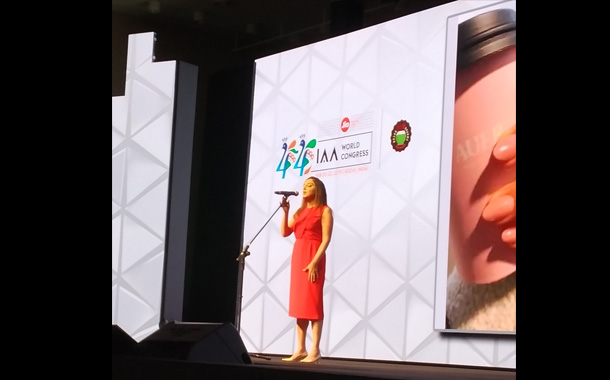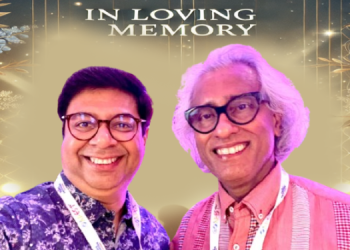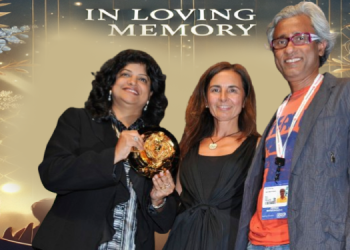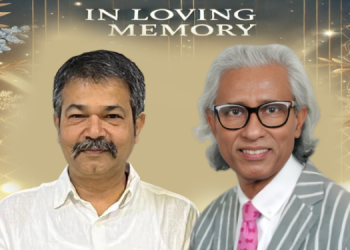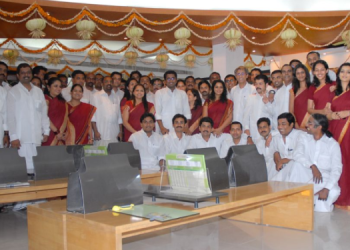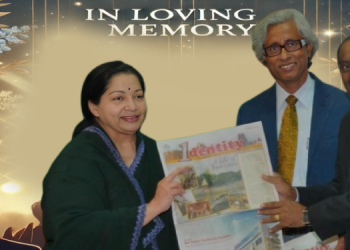Kochi : The third day of the first ever IAA World Congress in India of the global organisation The International Advertising Association (IAA) witnessed a intellectual stimulation from a galaxy of speakers that rarely grace a single platform. After having a couple of successful amalgamation of eminent speaker from different walks of life, sharing their insights and thought provoking speeches. The hat trick day of the three day long meet saw a mix of leaders offering their viewpoints and shared their ideas on various industry related topics. In continuation to the theme ‘Brand Dharma’, thought leaders, entertainers, domain experts and industry professionals discussed the future of the marketing and communications industry.
Excerpts from some of the key sessions:
Sheena Iyenger , Professor , Columbia Business School passionately spoke on the topic The Art of Making Choices while she shared that “No matter where you go in the globe, we have choices we make now we never imagined we would make. More choice means better opportunity to choose what we want, but it also makes harder for us to choose. ”
The consequences of exposing consumers with a lot of choices are:
- More choices less likely to make a choice.
- Inconsistent with the choices.
- Less satisfaction
“Beyond a point the information will start crumbling away. In short, more choices makes it cognitively complex for us to choose. We don’t choose alone. Every act of choice is communication. Every time we make a choice, we send a message:” I’m unique but I’m not outcast neither a part of the crowd.” she added.
She also shared that. “Every time people make choice, they ask a question of existence. Techniques helpful while making choices (for brands):
- Cut all the irrelevant options. Keep the choices manageable. 80% of sales come from 20% of the options offered.
- Categorization. Show how the choice are different.
- Create Condition that reduces complexity of choices
Tech helping in choices:
- Choosing is Picking and finding. And Imagining.
- We as humans have long figured out we are better pickers and finders and we have tech that can help. If you play more attention to AI, they can help us being better pickers and choosers. We might not know what we want but AI can get our choices right.
- Tech can help us expand our capacity to imagine.
Henri Poincare once said that Invention consists in avoiding the constructing of useless combinations and in constructing the useful combinations, which are in minority. To invent, is to discern, to choose. Hence I close by proclaiming to al, to choose is to invent”.
Throwing light on the topic ” Building Superhuman Brands for the Digital Age” Scott Bedbury – CEO, Brandstream Inc. shared the below insights:
Great brands serve a noble, meaningful and enduring purpose rooted in human needs.
Everyone has a need to love someone. Everyone needs to be Recognised, respected, valued and mean something. Understanding these touch points and triggering them is very important. Belonging is one of the most powerful statement to make by a brand. Great brands know the most meaningful moments in the world around them.
A badly executed, vague purpose can tear the world apart. A clear, well defined purpose can bring the world together. The best brands today are more fully present. In the age of so much digital distraction, distortion and disruption to be more fully present in the moments that matter big and small is to be more superhuman. It’s a great time to be purpose driven. It’s great time to be superhuman.In a hyper-transparent world, connected and viral world, a legacy or reputation won’t happen at the end of the career. It will happen every time you leave the room.
Pranav Mistry Head, Think Tank Team & Global Vice President-Research, Samsung during his session on The Future of (Mobiles and Wearable) Information Technology spoke on Tablets that is becoming a concept going on since years and can be dated as ancient as 5500 BCE.
It is the same now, just the tech and mediums are changing. Today’s tech is more interactive unlike TV and radio. Information part is the only thing that stays stable. Tech and medium keeps changing and will keep changing.
Now is the exciting time where the urge of information will stay the same but the tech will keep upgrading and it will help us to shape tomorrow. The industry is catching up with the new technology. All things happening in our phone over google, can happen in real world and what I am showing you will very soon be reality, the day is not far.
There’s a negative effective of growing technology. We, creators and promoters, have to be responsible and ethical in a way that tech and content doesn’t become a problem for the users.
Jean David, Pioneer and builder Cirque du Soleil – Lessons in innovation, started his discussion by pointing out how Cirque du Soleil is great example of blue ocean strategy. How the company became a game changer. He explained that as a circus, not having animals (was bizarre for people to understand) was actually the main point of differentiation and game changer for us. We started producing shows ourselves that meant that we could move anywhere, anytime we want. We wanted to be as good as our artists and clown , jugglers and acrobats and hence we made them part of our management model. We believed that our clients are intelligent people and we stressed that in our marketing and communication. We realised that we needed to be respectful of our clients and transparent, because they were looking for authenticity, meaning in what they experience and willing to share what they experienced, our clients, integrate experience in their own identity. Our clients wanted to learn something at the same time entertained eduterinmanent.
Our learning was to let the clients to the wok of customer service. When you deliver the goods with your performance, customers forgive you for absolutely everything
We had to be intelligent to deal with intelligent client and so we had to have intelligent employees. For us, smart employees are those who are willing to collaborate, to care about the product services and all partners, they want to makes sense of what they are doing, they want to share and perform, and more importunely judged by their performance
Power of innovation
- Restrict the offer to sell more. Create artificial demand.
- Extreme marketing. Aggressive marketing strategy.
- Two different problems, one solution.
Pillars of success are Creativity & Competitiveness.
Culture of innovation:
- Driven by the creativity of all
- Encourage independence and accountability
- Approves taking risks while reducing the status quo
- Promotes and develops the ability to see, think and act differently
- Supports new ideas
Alexandra Deschamps-Sonsino Interaction Designer, Product Designer & Entrepreneur talked about Designing Ethical Products in the Era of Internet of Things
‘Evolution is apparently intent that man fulfill a much greater destiny than that of being simple muscle and reflex machine.’ Buckminster Fuller.
Our humanity defines who we are. And humanity is defined by our ethics.
Ethics works if you’re an architect, a doctor or an engineer. You have responsibilities and you are liable.
Responsibilities and liability is less clear in internet of things because the possibilities are endless
Pointers for Ethical IoT:
Lifecycle: How long the product might last. Offer consumers easy repair and spare parts. Be transparent about the production processes. Be clear how long you will support the product for.
Data Governance: never change core functions. Be clear with the risk involved in using products. Make the legality of the product usage clear.
Openness and interoperability: Encourage open source and use APIs for physical products
Permissions and Ownership: Allow someone to switch service providers. Accomodate multiple and transitory use.
Sometimes users and customers have more information than IoT.
Privacy: GDPR implemented by EU in 2018.
Security: Minimum cryptographic security on its backend and secure configuration. Backend which implements additional security. Impose stronger user identity policy.
You can argue that IoT isn’t responsible for child addiction. IoT is part of the ecology but not start point. It connects digital tech that kids get addicted to.
Rumman Chowdhury Global Lead for Responsible AI, Accenture Applied Intelligence while talking on Responsible Artificial Intelligence for Humanity shared that, AI is something you use every single day on our screens. Everyday images coming to our mind.
Need of ethics in AI:
- Data Bias: Selection or sampling bias and measurement bias. How much is sufficient, what to take.
- Reporting/Response Bias: sensitivity and reliability of the data at question
- Design Bias: is a feedback loop engineered (structure that causes output to eventually influence it’s own input)
How can these biases create a problem:
It will create societal bias.
Data is not an objective truth. It is reflective of pre-existing institutional, cultural and social biases.
Primary harms of social biases due to data: Loss of opportunity. Economical loss. Social detriments. Loss of liberty.
Moral Outsourcing is becoming prominent. Moral Outsourcing meaning: The anthropomorphising of AI to shift the blame of negative consequences from human to algorithms.
The problem with moral Outsourcing: it can lead to a particular way of thinking and acting, and polarise a civilization.

